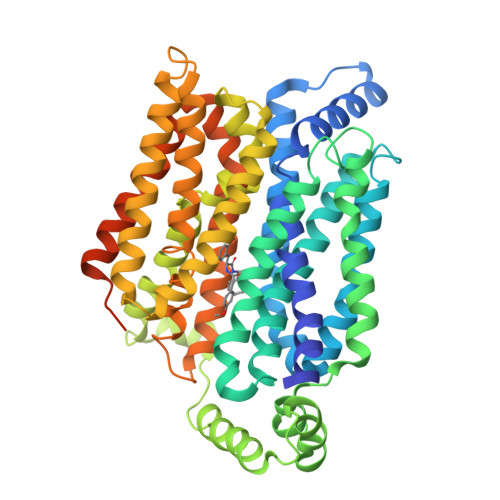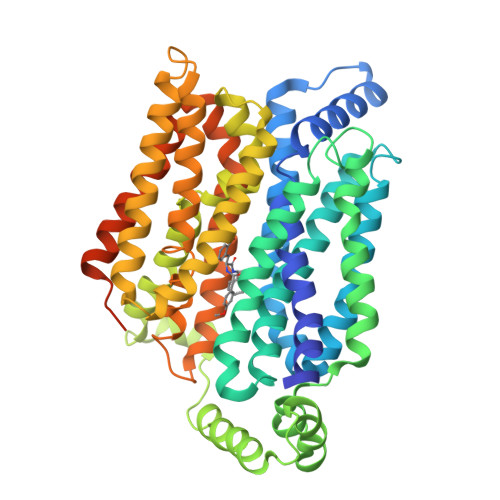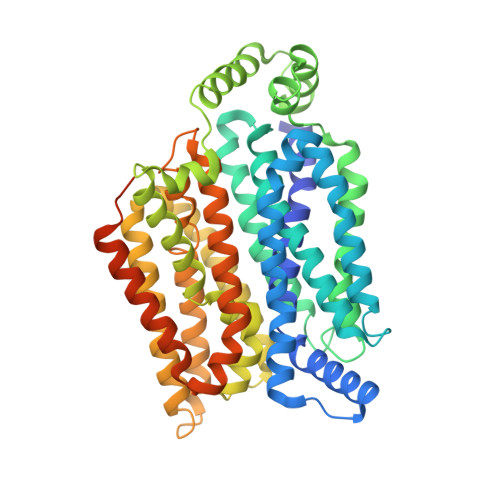Mechanism of inhibition of human glucose transporter GLUT1 is conserved between cytochalasin B and phenylalanine amides.
Kapoor, K., Finer-Moore, J.S., Pedersen, B.P., Caboni, L., Waight, A., Hillig, R.C., Bringmann, P., Heisler, I., Muller, T., Siebeneicher, H., Stroud, R.M.(2016) Proc Natl Acad Sci U S A 113: 4711-4716
- PubMed: 27078104
- DOI: https://doi.org/10.1073/pnas.1603735113
- Primary Citation of Related Structures:
5EQG, 5EQH, 5EQI - PubMed Abstract:
Cancerous cells have an acutely increased demand for energy, leading to increased levels of human glucose transporter 1 (hGLUT1). This up-regulation suggests hGLUT1 as a target for therapeutic inhibitors addressing a multitude of cancer types. Here, we present three inhibitor-bound, inward-open structures of WT-hGLUT1 crystallized with three different inhibitors: cytochalasin B, a nine-membered bicyclic ring fused to a 14-membered macrocycle, which has been described extensively in the literature of hGLUTs, and two previously undescribed Phe amide-derived inhibitors. Despite very different chemical backbones, all three compounds bind in the central cavity of the inward-open state of hGLUT1, and all binding sites overlap the glucose-binding site. The inhibitory action of the compounds was determined for hGLUT family members, hGLUT1-4, using cell-based assays, and compared with homology models for these hGLUT members. This comparison uncovered a probable basis for the observed differences in inhibition between family members. We pinpoint regions of the hGLUT proteins that can be targeted to achieve isoform selectivity, and show that these same regions are used for inhibitors with very distinct structural backbones. The inhibitor cocomplex structures of hGLUT1 provide an important structural insight for the design of more selective inhibitors for hGLUTs and hGLUT1 in particular.
Organizational Affiliation:
Department of Biochemistry and Biophysics, University of California, San Francisco, CA 94158;

















